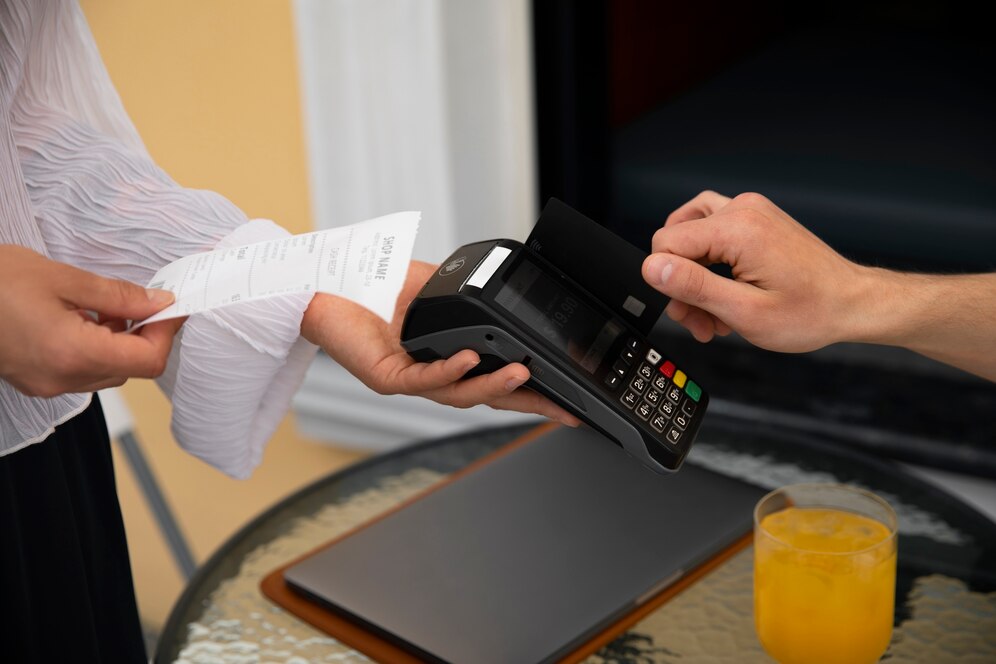Menu
- E-Invoice Guidelines Update (21st February 2025)
- What is an e-Invoice?
- e-Invoice Implementation Timeline
- e-Invoicing Process in Malaysia
- e-Invoicing Process for B2B Transactions
- e-Invoicing Process for B2C Transactions
- e-Invoicing Model in Malaysia
- MyInvois Portal
- Application Programming Interface (API)
- Type of e-Invoices in Malaysia
- Who Needs to Comply with e-Invoicing in Malaysia?
- Benefits of e-Invoicing in Malaysia
- Challenges of e-Invoicing for Businesses in Malaysia
In March 2023, the Inland Revenue Board of Malaysia (IRBM) announced that all businesses registered in Malaysia are required to generate e-invoices for B2B, B2G, and B2C transactions.
The first phase began on 1 August 2024 for businesses with turnover exceeding 100 million, and phase 2 began on 1 January 2025 for businesses with turnover exceeding RM 25 million. These businesses are now submitting e-invoices to the IRBM using the UBL 2.1 format (either XML or JSON) through the MyInvois portal or via direct API integration.
In phase 3 of e-invoicing in Malaysia, starting July 1, 2025, all businesses with turnover less than RM 25 Million and more than RM 500,000 are required to generate e-invoices.
E-Invoice Guidelines Update (21st February 2025)
- Change in E-Invoice Implementation Timelines & Relaxation Periods: Businesses with revenue of more than RM150,000 and up to RM500,000—Implementation will be mandatory from 1 January 2026, with a relaxation period until 30 June 2026.
- Additional Clarifications: For new businesses or operations commencing in 2025 onwards, the e-invoice implementation date is 1 January 2026 or the date of operation commencement.
- Import of Goods: Malaysian purchasers must now issue a self-billed e-invoice by the end of the second month following customs clearance (previously only one month).
What is an e-Invoice?
An e-invoice is a digital record of a transactional exchange between a seller (supplier) and a purchaser (buyer), which goes through the government portal in real time for validation and recordkeeping.
e-Invoice Malaysia would contain 55 fields with details of the transactions such as seller & buyer details, item description, quantity, price, tax, total amount, payment details, etc. Successfully validated and generated e-invoices would also have a Unique Identification Number (UIN) and QR Code, which is generated by the MyInvois Portal, enabling online validation of the invoice.
e-Invoice Implementation Timeline
The e-Invoicing system in Malaysia began on August 1, 2024, for taxpayers with an annual turnover or revenue exceeding RM100 million. The upcoming phases of implementation are as follows:
- January 1, 2025: Taxpayers with an annual turnover or revenue between RM25 million and RM100 million.
- July 1, 2025: All businesses except with annual turnover less than RM 25 Million and less than RM 500,000 .
- January 1, 2026: All businesses except exempt businesses with turnover less than RM 150,000
e-Invoicing Process in Malaysia
The steps to generate an e-invoice in Malaysia vary depending on the e-invoicing model (API or MyInvois Portal) and whether the transaction is B2B or B2C. However, the majority of the process remains consistent.
Here is a general overview:
e-Invoicing Process for B2B Transactions
- Issuance: Supplier creates and sends e-Invoice to IRBM via MyInvois Portal or Business system integrated with MyInvois System via API.
- Validation: IRBM validates the e-invoice in real-time. A Unique Identifier Number is issued.
- Notification: IRBM notifies both supplier and buyer of the validated e-invoice.
- Sharing: Supplier shares validated e-Invoice with buyer, including a QR code.
- Rejection/Cancellation: Within 72 hours, the buyer can request rejection and the supplier can cancel. However, justification is required for any changes and rejection
- Sharing Human Readable format: Suppliers can then share human readable (PDF, JPG) format of the e-invoice.
e-Invoicing Process for B2C Transactions
Suppliers must issue e-invoices for all B2C transactions. However, many buyers, particularly end consumers and specific businesses, do not need an e-invoice. Therefore, the generation of e-invoices for B2C transactions varies based on the buyer’s requirements:
- When the Buyer Requests an E-Invoice: Suppliers gather details from the buyer/consumer and generate e-invoices in real-time, similar to B2B e-invoices.
- When the Buyer Does Not Require an E-Invoice: The IRBM allows suppliers to consolidate transactions with buyers who do not need an e-invoice into a monthly consolidated e-invoice.
The process is clearly explained in the chart below for Malaysia B2C e-Invoicing.
e-Invoicing Model in Malaysia
In Malaysia, companies can choose from the following transmission modes to report e-invoices known as e-invoicing models
MyInvois Portal
The MyInvois Portal allows users to generate e-invoices manually, either one at a time or in bulk by uploading a spreadsheet in a predetermined format. This portal is ideal for Micro, Small, and Medium-sized Enterprises (MSMEs) or companies with lower transaction volumes due to the need for manual data entry.
The portal was made live by the IRBM on June 28, 2024, offering both testing and production environments. It can be accessed at preprod-mytax.hasil.gov.my or mytax.hasil.gov.my.
Application Programming Interface (API)
Businesses can integrate their ERP, billing, or accounting systems with the MyInvois system through an API. This integration enables the automatic generation, sending, receiving, and correction of e-invoices directly through their systems, making it possible to handle large volumes of transactions in real-time.
Recognizing the complexity of this integration, the Lembaga Hasil Dalam Negeri (LHDN) has introduced the e-invoice Malaysia
Type of e-Invoices in Malaysia
The below documents must be issued in electronic format under Malaysia e-Invoice:
- Invoices: It is generally used to record transactions between supplier and buyer. Invoices also include a self-billed invoice issued for tracking expenses.
- Credit notes: A credit note is a document issued by sellers to make corrections to an e-Invoice issued previously mainly to lower the original invoice’s value without returning money to the Buyer. It is generally used to adjust errors, apply discounts, or account for returned items.
- Debit notes: In contrast to credit notes, debit notes are issued to record additional costs related to a previously issued e-Invoice.
- Refund notes: A refund e-Invoice is an official document issued by a Seller to record refund issued to the Buyer.
Who Needs to Comply with e-Invoicing in Malaysia?
LHDN has released guidelines outlining which entities, individuals, and businesses are required to adhere to e-invoicing rules, as well as those exempt from them.
| Entities Required to Comply with e-Invoicing in Malaysia | Entities exempt from e-Invoicing |
| Associations Body of persons Branches Business trusts Co-operative societies Corporations Limited liability partnerships Partnerships Property trust funds Property trusts Real estate investment trusts Representative offices and regional offices Trust bodies Unit trusts | Foreign diplomatic offices Individuals not conducting business Statutory bodies, authorities, and local authorities: For collection of fees, charges, or statutory levies and for transactions conducted before 1 July 2025 International organizations (for transactions before 1 July 2025) Taxpayers with annual revenue below RM150,000 |
Benefits of e-Invoicing in Malaysia
The Malaysian government aims to boost the digital economy and improve tax administration with e-invoicing in Malaysia. Key benefits include:
- Unified Invoicing: Streamlines creation and submission of invoices, automating data entry.
- Integrated Tax Filing: Ensures efficient and accurate tax reporting.
- Streamlined Operations: Increases efficiency and saves resources on tax compliance
- Improved Cash Flow: Reduces billing errors, speeds up payment cycles, and minimizes disputes.
- Digitized Reporting: Aligns financial reporting with digital standards.
- Paperless Invoicing: Eliminates paper use and prevents tax leakage.
- Ease of Trade: Simplifies operations for international trade businesses.
Challenges of e-Invoicing for Businesses in Malaysia
The shift to e-invoicing in Malaysia brings several challenges:
Data Accuracy and Integration: Integrating e-invoicing with existing systems and ensuring accurate data exchange is challenging.
Compliance: Complying with the e-invoicing regulations for business through technological integrations is extremely challenging.
Technological Transition: Moving from manual to automated invoicing systems requires adaptation to new technologies, deep tech integrations and staff training.
Resistance to Change: Employees accustomed to traditional methods may resist adopting e-invoicing in Malaysia.
Feasibility: Smaller businesses with limited IT infrastructure and lower resources would struggle with the technological demands.





